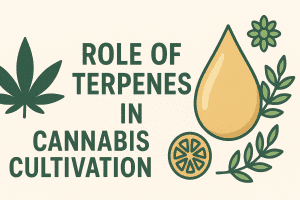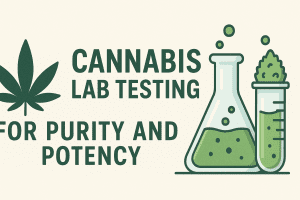Cannabis concentrates represent the pinnacle of potency and refinement in cannabis products. They offer enhanced flavor, strength, and purity—all made possible through advanced extraction science. Understanding how these concentrates are made is key to appreciating their value and safely using them. In this article, we break down the main types of cannabis concentrates, how they’re created, and the science behind their production.
What Are Cannabis Concentrates?
Concentrates are products derived from cannabis that contain a much higher concentration of cannabinoids and terpenes than the raw flower. They come in various forms like wax, shatter, oils, budder, and live resin, each differing in texture and composition depending on the extraction method.
Main Extraction Methods
Solvent-Based Extraction
This involves using chemicals to separate cannabinoids and terpenes from plant material.
Butane Hash Oil (BHO):
- Uses butane to extract resin. It produces products like wax, shatter, and budder. Requires purging to remove residual solvents.
CO2 Extraction:
- Uses supercritical CO2, which acts as both a gas and a liquid, to extract compounds. It’s cleaner and preferred for vape oils and edibles.
Ethanol Extraction:
- Involves soaking cannabis in ethanol. It’s efficient for large-scale production but may strip some desirable terpenes.
Scientific Note:
Solvent-based methods rely on the principle of solubility and polarity—cannabinoids are non-polar, so they dissolve well in non-polar solvents like butane and CO2.
Solventless Extraction
This technique uses mechanical means rather than chemicals.
Rosin Pressing:
- Involves applying heat and pressure to cannabis flower or hash to extract resin.
Ice Water Hash (Bubble Hash):
- Uses cold water and agitation to knock trichomes off the plant.
Scientific Note:
Solventless methods leverage the physical properties of trichomes—their brittleness when frozen and their sticky resin content when heated.
Post-Processing Techniques
Once extracted, concentrates often undergo refinement to improve texture, potency, and purity:
Winterization:
Removes fats and waxes by dissolving the concentrate in ethanol and freezing it.
Distillation:
Uses heat and vacuum pressure to separate cannabinoids from other compounds, producing high-purity distillates.
Terpene Reintroduction:
Re-adds original or external terpenes for enhanced flavor and aroma.
Types of Cannabis Concentrates
Shatter:
Glass-like, brittle texture. High in THC. Created via BHO extraction.
Wax/Budder:
Soft and opaque with a whipped texture. Easier to handle than shatter.
Live Resin:
Made from fresh frozen cannabis, preserving terpenes and aroma.
THC Distillate:
Nearly pure THC. Odorless and flavorless, used in vapes and edibles.
Hash:
Traditional solventless concentrate from pressed trichomes.
Why It Matters
Concentrates allow for high-dose delivery of cannabinoids and are favored for their flavor profiles and fast onset of effects. However, understanding the science behind their creation is essential for ensuring quality, safety, and proper usage.
From the solubility of cannabinoids to the volatility of terpenes, the science of concentrates involves a blend of chemistry, physics, and botany—making it a fascinating frontier in cannabis innovation.


